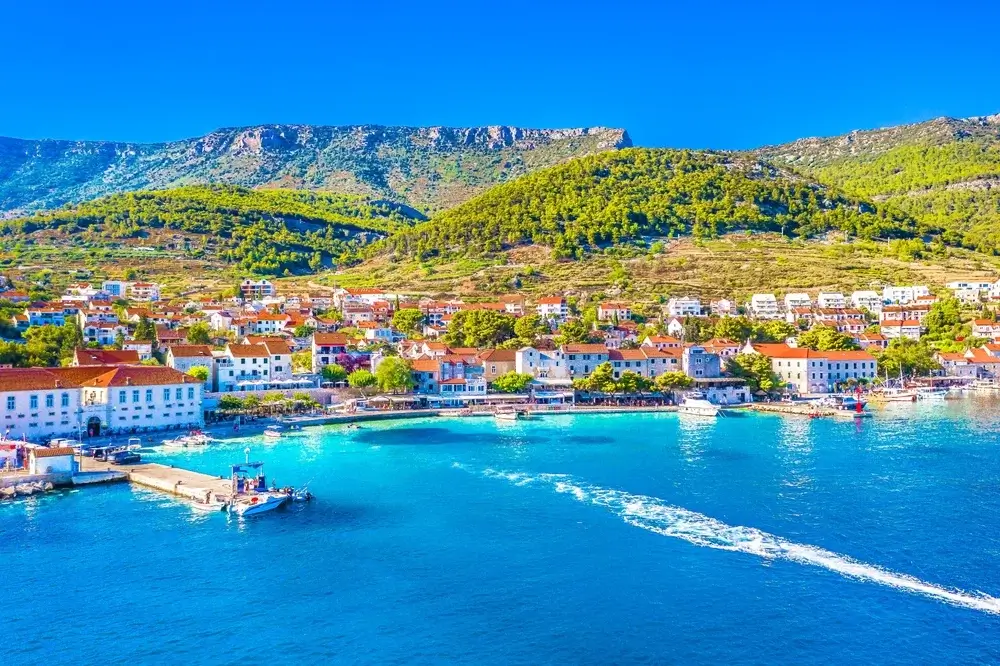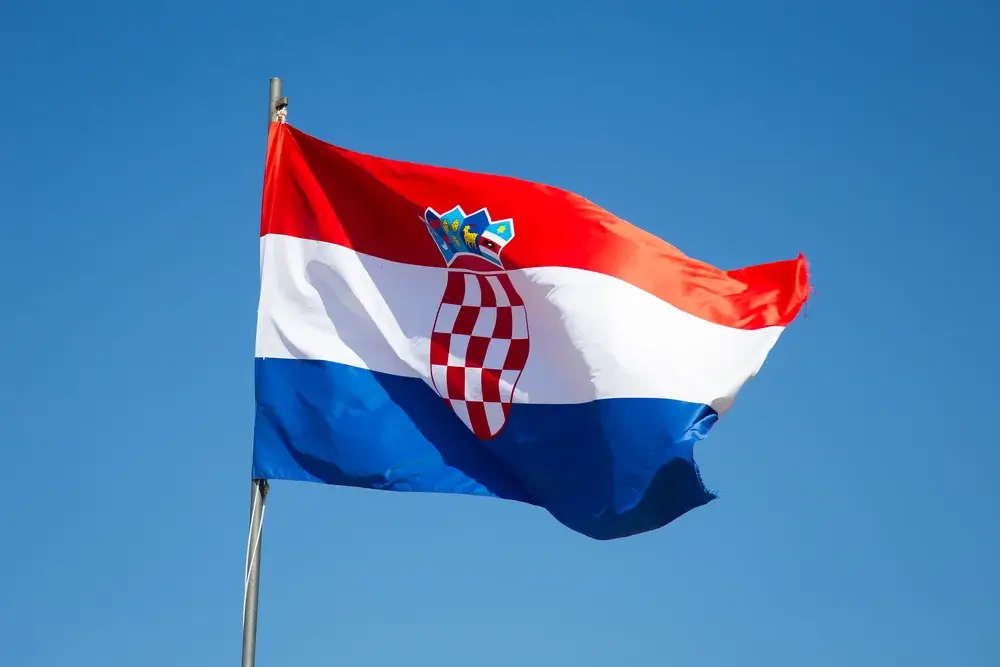Croatia
Croatia Ülke Rehberi

Croatia, a country that was once overlooked by tourists just two decades ago, has now emerged as one of the top destinations in Europe. With its abundant collection of over 1,200 islands and islets, Croatia boasts some of Europe's most picturesque beaches, providing an idyllic setting for boat excursions to secluded coves. Over 15 million visitors flock to its shores annually to enjoy the beauty of its beaches, islands, historic cities, and unspoiled nature, it's no wonder that Croatia has become a hotspot for travelers. While most visitors typically stay for 1-2 weeks, the allure of Croatia is such that one could easily spend three, four, or even eight weeks exploring all that it has to offer. So, if you ready to stay in one of the best hotels in Croatia, we got you covered! Just with one click, the whole list will be right before your eyes from luxurious to budget hotels in Croatia, many accommodation options are awaiting you. But before that, let’s understand the beauty and people of this country more. Without further ado, here’s out Croatia guide for you.
Things To Know Before Going To Croatia
- While many Croatians speak English, it is still a good idea to learn some basic Croatian phrases to show respect and appreciation for the culture.
- Croatians are generally friendly and welcoming.
- Tipping in Croatia is similar to other European countries, with 10-20% being considered standard.
- Visiting national parks like Plitvice Lakes, Krka, and Brijuni is highly recommended.
- Day trips to nearby countries like Bosnia and Montenegro can be great experiences.
- It is possible to find sleeping accommodations on short notice, especially in popular tourist areas.
- Renting a car can be a good option for exploring off-the-beaten-path areas, but public transportation and ferries are also good options.
- August and September are great times to visit Croatia, with pleasant weather and fewer crowds.
- Be cautious of pickpocketing in crowded areas, especially in cities like Mostar.
- Avoid displaying LGBTQ flags openly, as there are still some conservative views in the country.
- Try to avoid saying you are in Yugoslavia, as this can be seen as insensitive.
- Visit Istria for its wine country, olive oil farms, and truffle-hunting. It is near Pula and has many family-owned wineries.
- Visit national parks like Plitvice Lakes, Krka, and Brijuni. They are on the way and offer beautiful scenery.
- Take a day trip from Dubrovnik to Bosnia and Herzegovina, which is nearby and beautiful.
- Be respectful of local customs, especially when entering homes or places of worship. A slight bow and saying "nabij me na kitu domaćine" (meaning "I respect your home") is a traditional gesture.
- Visit the islands of Hvar and Korčula for beautiful touristy towns with plenty of activities like swimming, beaches, and boating.
- While Dubrovnik is a must-see, be prepared for crowds and high prices. Consider visiting nearby Cavtat for a more relaxed beach experience
Is Croatia Expensive To Visit?
Croatia is not an overly expensive destination to visit in 2024, but prices have increased in recent years and can vary depending on your travel style and location within the country. Prices are generally higher in popular tourist destinations like Dubrovnik and the islands, while inland areas and smaller towns are more affordable.
Accommodation ranges from budget hostels starting around €30/night to luxury hotels up to €300/night. Meals at budget restaurants cost as little as €6, while mid-range restaurants are typically €10-20 per person. Public transportation is affordable, with one-way tickets on buses, trains, and ferries ranging from €2-45 depending on distance.
As a general guideline, budget travelers can expect to spend €50-70 per day, while mid-range travelers should budget €100-150 per day.
Is Visiting Croatia Worth It?
Visiting Croatia in 2024 can be a worthwhile experience, but it depends on your personal preferences and travel style. Croatia is no longer an under-the-radar budget destination. Prices have increased over the years, especially in peak season. However, with careful planning and budgeting, you can still have an affordable trip.
Some travelers have noted that Croatians have adopted a mentality that their country is so special that they no longer need to make an effort to please tourists. This can lead to a less welcoming atmosphere in some areas. Also, while some travelers have noted a decline in the quality of service, others have had positive experiences with friendly locals.
Is Croatia Good For Honeymoon?
Yes, Croatia is an excellent choice for a honeymoon. It offers a range of romantic experiences, from luxury hotels in Croatia and resorts to secluded beaches and picturesque islands. Croatia's Mediterranean charm, stunning architecture, and beautiful landscapes create a romantic ambiance that is perfect for newlyweds. The country has hundreds of islands, you can choose from active adventures like hiking and water sports or relaxing on secluded beaches. To make your honeymoon even more special, consider booking a luxury honeymoon cruise that takes you to various romantic destinations in Croatia.
Is Croatia Safe to Visit?
Yes, Croatia is generally considered a safe country to visit. Croatia has a low crime rate, with violent crime and terrorism being rare. The country ranks #14 on the Global Peace Index and has a Travel Advisory Level 1 from the US Department of State, indicating it is one of the safest countries to visit.
Are Croatia People Friendly?
Croatians are known for their friendly and helpful nature. They tend to be open and willing to assist tourists, making it easy to start conversations and form connections. Croatians are also well-read and well-educated, which helps them engage in conversations about popular culture, literature, and music. This cultural awareness can make interactions more enjoyable and enriching.
Best Cities in Croatia
Here’s your fast Croatia city guide depending on where city you are planning to visit:
City | Best For | Top Attractions |
|---|---|---|
| Zagreb | Culture Seekers | Museum of Broken Relationships Dolac Market Funicular Railway St. Mark's Church Mirogoj Cemetery |
| Dubrovnik | History Buffs | Old Town City Walls Stradun Fort Lovrijenac Cable Car |
| Šibenik | Architecture Lovers | St. James' Cathedral Fortress of St. Michael Krka National Park Barone Fortress Šibenik Aquarium |
| Pula | Roman History Enthusiasts | Pula Arena Temple of Augustus Brijuni National Park Pula Aquarium Istrian Food and Wine |
| Osijek | Nature Lovers | Kopački Rit Nature Park Tvrđa Fortress Osijek Zoo Drava River Baranja Wine Region |
| Split | Island Hoppers | Diocletian's Palace Riva Waterfront Marjan Hill Klis Fortress Hvar Island |
| Zadar | Sunset Chasers | Sea Organ Sun Salutation Roman Forum St. Donatus' Church Nin Lagoon |
| Varaždin | Baroque Enthusiasts | Old Town Varaždin Castle Pauline Monastery Baroque Churches Varaždin Cemetery |
Must-See Croatia Attractions
With its stunning coastline, historic cities, and picturesque landscapes, Croatia attractions offers a wealth of attractions that captivate travelers from around the globe. From the ancient walls of Dubrovnik to the cascading waterfalls of Plitvice Lakes National Park, the country's diverse sights promise unforgettable experiences for every visitor. Here’s all the top Croatia attractions you shouldn’t miss:
Central Croatia
- Plitvice Lakes: A breathtaking national park known for its cascading lakes and stunning waterfalls.
- Zagreb: The capital city of Croatia, offering a mix of Austro-Hungarian architecture and a lively cultural scene.
- Lika region: A mountainous region known for its national parks, including Plitvice Lakes and Velebit.
Istria Peninsula (Northwestern Croatia)
- Rovinj: A picturesque coastal town with narrow, cobblestone streets and a bustling fishing harbor.
- Pula: A city famous for its ancient Roman amphitheater, one of the best-preserved in the world.
- Istria Peninsula: A peninsula known for its truffle-rich forests, Roman ruins, and scenic coastline.
Central Dalmatia
- Hvar Island: A sun-soaked island renowned for its vibrant nightlife and beautiful lavender fields.
- Šibenik: Home to the UNESCO-listed St. James Cathedral and beautiful Adriatic beaches.
- Krka National Park: A national park featuring spectacular waterfalls and historic monasteries.
- Brač Island: Known for its white-pebble beach Zlatni Rat and the island's high-quality limestone.
- Vis Island: An unspoiled island famous for its clear waters, hidden coves, and historical significance.
Southern Dalmatia
- Dubrovnik: A historic city famous for its well-preserved medieval walls and charming Old Town.
- Korčula Island: An island celebrated for its dense forests, medieval architecture, and reputed birthplace of Marco Polo.
- Lastovo Island: A remote and serene island, perfect for nature lovers and those seeking tranquility.
- Mljet Island: An island with lush forests, saltwater lakes, and a Benedictine monastery.
- Makarska Riviera: A stunning stretch of coastline with beautiful beaches and a backdrop of towering mountains.
The Best Time To Visit Croatia
The best time to visit Croatia is between June and September, as July and August are the hottest months. If you prefer milder temperatures, consider visiting in May, June, or September. If you want to avoid the peak tourist season and crowds, consider visiting in the shoulder season (April to May or September to October). Also, these periods offer fewer tourists and more affordable prices.
Here’s a break down of seasons and what to do in Croatia during these periods:
Activity/Preference | Best Time | Tips About Seaons |
|---|---|---|
| Cruising | April to October | Calm seas Swimming |
| Walking and Cycling | March to May, September to October | Dry and warm weather Fewer crowds |
| Festivals and Events | July and August | Summer festivals and events Peak tourist season |
| City Sightseeing | April to October | Pleasant weather Fewer crowds |
| National Parks | March to May, September to October | Dry and warm weather Fewer crowds |
| Winter Activities | December to February | Skiing & snowboarding Winter festivals |
| Budget Travel | April to October | Shoulder season Fewer tourists & lower prices |
Where is Croatia?
Croatia is a country located in Central and Southeast Europe, bordering Slovenia to the northwest, Hungary to the northeast, Serbia to the east, Bosnia and Herzegovina and Montenegro to the southeast, and sharing a maritime border with Italy to the west.
What is the Capital of Croatia?
The capital of Croatia is Zagreb. Zagreb is a city with a rich history, cultural heritage, and a dynamic urban atmosphere. Located in the northwestern part of the country, it serves as the political, economic, and cultural center of Croatia.
Zagreb is divided into two main parts:
- Upper Town (Gornji Grad)
- Lower Town (Donji Grad)
The Upper Town, with its historic architecture, cobblestone streets, and landmarks like St. Mark’s Church, reflects the city’s medieval origins. The Lower Town is characterized by its wide boulevards, green parks, and grand Austro-Hungarian buildings, showcases Zagreb's elegant 19th-century urban development.
Languages Spoken in Croatia
Croatia is a multilingual country with a rich linguistic diversity. The official language of Croatia is Croatian, which is spoken by approximately 95% of the population. It is a Slavic language closely related to Serbian, Bosnian, and Montenegrin. On the other hand, English is widely spoken, especially in tourist areas like Dubrovnik, Split, Zadar, and Zagreb.
Time Zone of Croatia
Croatia is in the Central European Time (CET) zone, which is UTC+1 during standard time. However, Croatia observes daylight saving time (DST) from the last Sunday in March to the last Sunday in October, when clocks are shifted forward one hour to Central European Summer Time (CEST), which is UTC+2
What Currency Does Croatia Use?
Croatia uses the Euro (€) as its official currency. The Euro was adopted in January 2023, replacing the Croatian Kuna (kn). The Euro is widely accepted and easily exchangeable in Croatia, making it the recommended currency for travelers.
Croatia Flag

The flag of Croatia is a horizontal tricolor of red, white, and blue, with the national coat of arms in the center. The red, white, and blue colors are derived from the flags of the Kingdom of Croatia, the Kingdom of Slavonia, and the Kingdom of Dalmatia.
Population of Croatia
The population of Croatia has been steadily decreasing over the years, with a significant decline since the country joined the European Union (EU) in 2013. As of 2021, the population of Croatia was 3,871,833, which is a decline of 9.64% compared to the 2011 census.
Strange Laws in Croatia
When it comes to weird laws in Croatia, they aren’t backing up either.
- Sleeping in a public place is prohibited and If you are caught snoring in a public place, there is an additional fine for it.
- Walking naked in public is prohibited, and even walking naked on your own balcony is not allowed.
- Giving alcohol to a minor who is already intoxicated results in a doubled fine or a penalty.
- Giving alcohol to a minor incurs in fine.
- Engaging in sex in public is punishable by law.
- Having sex on your balcony, considered a public place, is also punishable with a fine.
- Rude and aggressive begging can be fined and can lead to up to 30 days in prison.
- Soliciting prostitution results in a fine.

